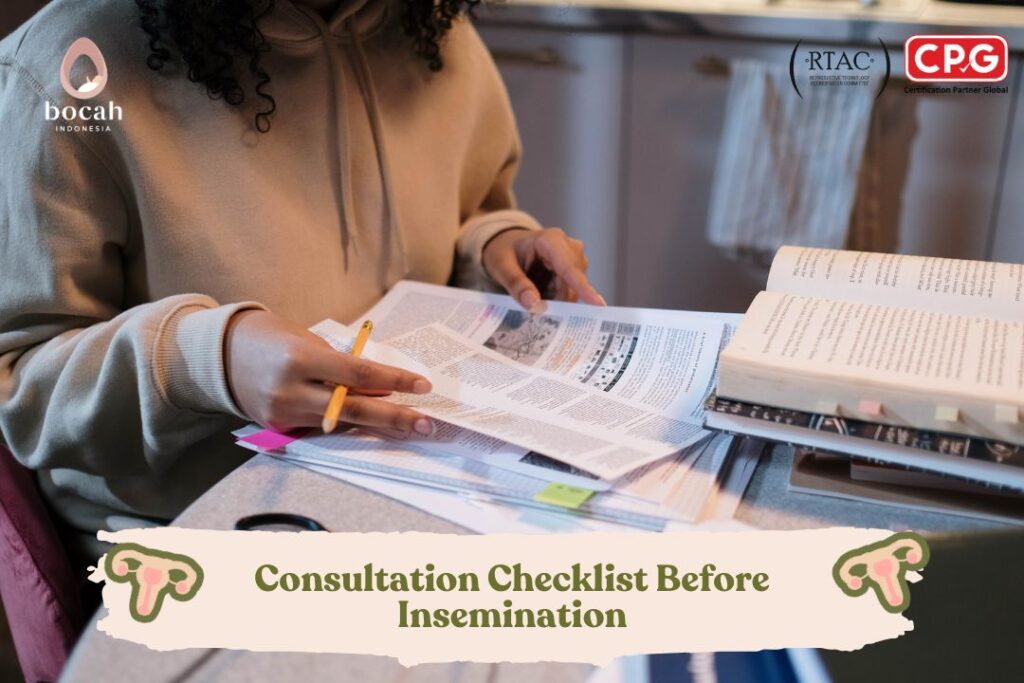In Vitro Fertilization (IVF) Success Rate
Bocah Indonesia has conducted in vitro fertilization procedures on 350 patients, out of which 101 babies have been born through this procedure. The success rate of in vitro fertilization at Bocah Indonesia in 2021 reached 34.3%.

What is The Success Rate of IVF (In Vitro Fertilization) at Bocah Indonesia?

Data Source: Bocah Indonesia 2023
Angka tersebut lebih tinggi dibandingkan data HFEA 2022 (July 2024) yang melaporkan bahwa rerata keberhasilan untuk Fresh Cycle sebesar 31% dan Frozen Cycle sebesar 36%. Angka kerberhasilan Bocah Indonesia juga lebih tinggi dibandingkan data keberhasilan IVF rerata VARTA 2023. Laporan VARTA 2023 (Data Juni 2022 – Juli 2023) melaporkan bahwa rerata keberhasilan Fresh dan Frozen Cycle sebesar 35.4%.

- The success rates are achieved without using egg or sperm donors, demonstrating Bocah Indonesia’s commitment to providing the best possible outcomes and hope for couples, especially in challenging cases.
- Bocah Indonesia ensures optimal egg stimulation, achieving ideal egg maturity to enhance pregnancy success rates. The graph below illustrates that higher egg maturity rates correspond to increased pregnancy rates. With an 83% egg maturity rate, Bocah Indonesia optimizes pregnancy success.

*Graphic citation: Behr BR, et al. Is Oocyte Maturation Rate A Predictor of IVF Outcome?. Fertility and Sterility, Volume 97, Issue 3, S25
- Bocah Indonesia ensures optimal egg retrieval (OPU) procedures, maximizing retrieval of mature eggs, as each egg is precious for prospective parents. Eggs fertilized with sperm develop into embryos. Bocah Indonesia achieves a 100% egg retrieval rate.
- Through ICSI/IMSI methods, Bocah Indonesia achieves high fertilization success rates, with 60.74% of eggs successfully fertilized by sperm.
- Bocah Indonesia maintains internationally accredited embryology laboratory standards. We adhere to the 2017 Vienna Consensus Standards, globally recognized. Our competency standards for Embryo Biopsy, Freezing, and Thawing exceed international benchmarks, supporting optimal pregnancy success rates for parents.
Freeze & Thaw Success Rate
D3 Embryo
D5 Embryo
Success Rate of Embryo Development
Embryo Biopsy Success Rate
Implantation Rate
*ESHRE Special Interest Group of Embryology and Alpha Scientist in Reproductive Medicine. Electronic address: coticchio.biogensi@grupposandonato.it. The Viena consensus: report of an expert meeting on the development of ART laboratory performance indicators. Reprod Biomed Online. 2017 Nov;35(5):494-510.
- The Implantation Rate measures the success of embryo attachment to the uterine endometrium. Higher implantation rates increase pregnancy chances. Bocah Indonesia exceeds international competency standards with exceptionally high implantation rates.
- Bocah Indonesia achieves higher Day-3 and Day-5 embryo development rates compared to international standards and studies. According to Fournier et al. (2019), blastocyst formation success decreases with age, indicating lower chances of viable blastocysts with advancing age.
Success Rate of Embryo Development
Cleavage Rate (Day 3)
Blastocyst Rate (Day 5)
| Age Group | <30 years | 30-34 years | 35-37 years | 38-40 years | 40-42 years | >43 years |
|---|---|---|---|---|---|---|
| Fournier, A (2019) | 35.70% | 38.20% | 35.40% | 25.90% | 23.10% | 14.50% |
| Bocah Indonesia | 44.92% (all age groups) | |||||
Specialist Andrologist & Head of Embryology Laboratory
We strive to build a lab with standards that are not only national but also international. One such example is where I studied at Monash University, Melbourne, Australia. There, the IVF laboratory uses very optimal standards in my opinion, and we aim to match or improve what we can at our place. We manage the pressure in the laboratory to be the highest, with the most optimal level of cleanliness, using the Hepa Filter system which is very useful for filtering very clean air.
Schedule a Consultation
We are happy to discuss the available financial options and help answer your questions.
Schedule a consultation by contacting us at (021) 50200800 or by filling out the form through the button below.

Frequently Asked Question
In conventional IVF, sperm still swim on their own towards the egg.
Whereas in the intracytoplasmic sperm injection (ICSI) procedure, sperm is directly injected into the egg.
The laboratory assessment indicators of Bocah Indonesia are based on international IVF laboratory scores.
News and Articles
Consultation Checklist Before Insemination
Written by Team Content Medis Bocah Indonesia Undergoing an insemination consultation is essential to understand the procedure, benefits, and risks of this treatment. Find out…
Selengkapnya
Episiotomy: Procedure, Types, Risks, and Recovery After Birth
Written by Team Content Medis Bocah Indonesia Lateral episiotomy is one of the episiotomy techniques designed to help the baby’s delivery and prevent irregular vaginal…
Selengkapnya
Artificial Insemination Procedure: A Complete Guide to a More Successful Pregnancy
Written by Team Content Medis Bocah Indonesia| Reviewed by dr. Chitra Hetti Fatimah Artificial insemination is a medical method that helps couples facing difficulty getting…
Selengkapnya






